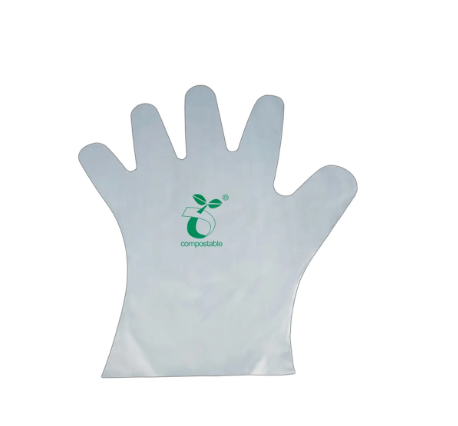Understanding Modern Protection Standards in Medical and Industrial Settings
The landscape of personal protective equipment has evolved dramatically, with disposable gloves becoming an indispensable component across numerous industries. From healthcare facilities to food service establishments, these protective barriers serve as the first line of defense against contamination, infection, and chemical exposure. The critical role of disposable gloves in maintaining safety and hygiene standards cannot be overstated, especially in our post-pandemic world.
As regulations and safety requirements continue to advance, understanding the comprehensive framework of glove safety standards becomes increasingly vital for both professionals and organizations. These standards not only ensure consistent quality but also provide crucial guidance for selecting appropriate protection for specific applications.
Essential Safety Classifications and Certifications
Medical Grade Standards
Medical grade disposable gloves must meet rigorous FDA requirements and comply with ASTM D3578 for natural rubber latex gloves or ASTM D6319 for nitrile gloves. These standards evaluate crucial parameters such as tensile strength, elongation properties, and freedom from holes. The AQL (Acceptable Quality Level) rating, typically 1.5 or 2.5 for medical gloves, indicates the statistical sampling method used to assess defect rates.
Healthcare facilities rely on these certifications to ensure their disposable gloves provide adequate protection against bloodborne pathogens and other biological hazards. The standards also address concerns about protein content in latex gloves and chemical resistance in synthetic alternatives.
Industrial Safety Requirements
Industrial applications demand different performance criteria for disposable gloves. EN 374 standards govern chemical and microorganism protection, while EN 388 addresses mechanical risks. These specifications ensure workers handling hazardous materials or performing precision tasks have appropriate protection without compromising dexterity.
Chemical resistance testing involves evaluating breakthrough times and degradation rates against specific substances. This information helps safety managers select appropriate gloves for particular workplace hazards.

Material Innovation and Performance Characteristics
Advanced Material Technologies
Modern disposable gloves incorporate sophisticated materials and manufacturing processes. Nitrile gloves have seen significant advancement in comfort and flexibility while maintaining superior puncture resistance. Innovative accelerator-free formulations address allergic reactions, while maintaining the crucial protective properties users expect.
Recent developments include enhanced grip patterns, reduced surface friction, and improved moisture management. These features significantly impact user comfort during extended wear periods while ensuring maintained dexterity for detailed tasks.
Sustainability Considerations
Environmental impact has become a crucial factor in disposable glove manufacturing. Biodegradable options and recycling programs are emerging, addressing the environmental concerns associated with single-use protective equipment. Manufacturers are developing eco-friendly alternatives without compromising safety standards or performance.
The industry is witnessing a shift toward sustainable packaging and reduced waste in manufacturing processes. These initiatives align with global environmental responsibilities while maintaining the integrity of protective equipment.
Application-Specific Requirements
Healthcare and Medical Uses
Healthcare settings demand disposable gloves that meet specific criteria for patient care, surgical procedures, and laboratory work. Double-gloving practices in surgical settings require gloves with distinct properties for both inner and outer layers. Color-coding systems help identify breaches in barrier protection.
The importance of proper sizing and fit cannot be overstated, as ill-fitting gloves can compromise both protection and performance. Healthcare workers must also consider factors such as tactile sensitivity and grip security when selecting appropriate gloves for specific procedures.
Food Service and Processing Standards
Food handling applications require disposable gloves that comply with FDA food contact regulations and EU food safety standards. These gloves must be free from harmful chemicals that could migrate into food products. Color coding helps prevent cross-contamination and supports HACCP compliance.
The food industry also demands gloves that can withstand frequent changes and variable temperature conditions while maintaining their protective properties. Durability and cost-effectiveness become crucial considerations in high-volume usage environments.
Proper Usage and Safety Protocols
Donning and Removal Procedures
Correct procedures for putting on and removing disposable gloves significantly impact their protective effectiveness. Proper hand hygiene before donning and after removal prevents contamination. Understanding the sequence of PPE use, especially in medical settings, ensures maximum protection for both users and those they interact with.
Training programs should emphasize proper removal techniques to prevent self-contamination. This includes never reusing disposable gloves and disposing of them appropriately after single use.
Storage and Handling Guidelines
Proper storage conditions maintain the integrity of disposable gloves until use. Temperature, humidity, and exposure to direct sunlight can affect material properties and shelf life. Regular inventory rotation ensures gloves remain within their expiration dates and maintain optimal protective properties.
Organizations should establish clear protocols for glove storage, including proper orientation of boxes and protection from environmental factors that could compromise quality.
Frequently Asked Questions
How do I choose the right size of disposable gloves?
Selecting the correct glove size involves measuring hand circumference and length. Properly fitted disposable gloves should feel snug but not restrict movement or circulation. They should extend to cover the wrist without gaps or loose material that could compromise protection.
What's the difference between powder-free and powdered gloves?
Powder-free gloves undergo additional processing to remove powder lubricants, making them suitable for sensitive environments and reducing allergen exposure. Powdered gloves contain cornstarch to ease donning but are being phased out in many applications due to potential complications.
How long can disposable gloves be worn safely?
The safe wearing time for disposable gloves depends on the application, exposure to contaminants, and visible signs of degradation. Generally, gloves should be changed when they become soiled, torn, or after completing specific tasks to maintain proper protection and hygiene standards.



